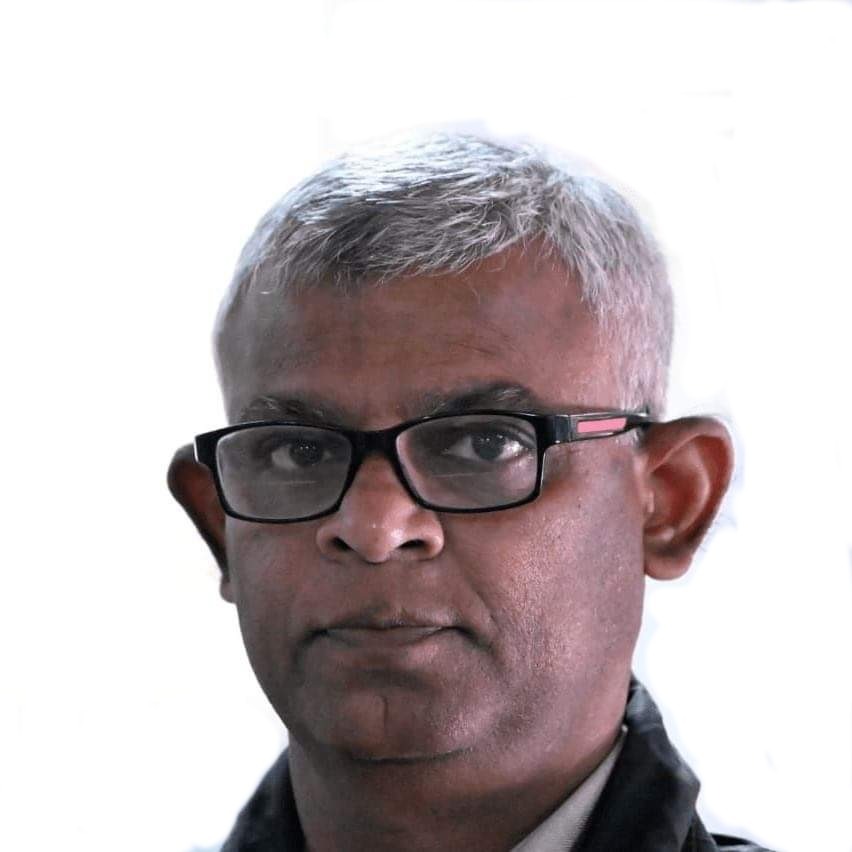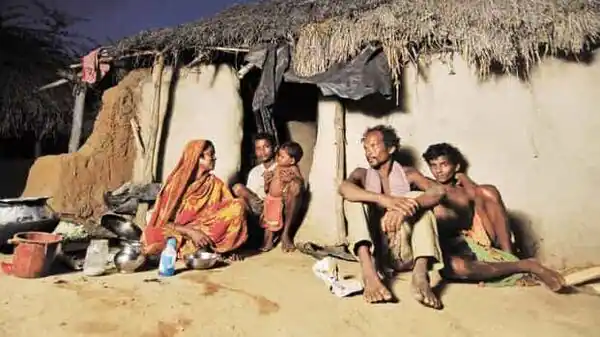- Recently, three contrasting news articles were encountered in India, where on one hand, a staggering 2,623 individuals swallowed a sum of 1.96 lakh crores from banks
“India is a rich country where poor people live; indeed, India is the rich country of the poor.”

Niraj Krishna
The statement, “Indian is poor, but the country of India has never been poor,” is not mine but that of the director of a Swiss bank, speaking about a country that holds within it a third of the world’s poverty. India dreams of developing as a superpower, but one-third of the world’s poor reside in this country. There are at least five estimates about the number of poor people in India, ranging from 34 million to 373 million. Based on various estimates between 2014 and 2022, the number of poor people in India is estimated to be between 2.5% and 29.5% of the population. Officially, there have been no updates to India’s poverty estimates since 2011 when there were approximately 269 million poor people (21.9% of the population), which was equivalent to 2.5 times the population of Bihar at that time.
Recently, three contrasting news articles were encountered in India, where on one hand, a staggering 2,623 individuals swallowed a sum of 1.96 lakh crores from banks, and on the other hand, the Global Hunger Index (GHI) report of 2023 revealed that India ranks 111th out of 125 countries. According to this report, India’s score is 28.7, indicating a severe level of hunger. One out of every three extremely poor people in the world is Indian.
Analyzing global economic progress, currently, the United States boasts the world’s largest economy with a GDP of 26.954 trillion US dollars. Following that, China holds the position of the second-largest economy. Germany stands as the third-largest economy with 4.43 trillion dollars, and Japan secures the fourth position with 4.231 trillion US dollars. India is the fifth-largest economy in the world with 3.73 trillion US dollars.
Certainly, while India appears to be on the path of economic progress, there are disparities causing concern in the realms of willful defaulters and poverty. In India, more than 23 crores (230 million) people are still impoverished. The question arises: if we are advancing towards becoming the third-largest economic power, what justification is there for not implementing plans to provide free grains and various other free schemes to 80 crores (800 million) Indians by 2028?
Speaking of poverty, according to the United Nations’ definition, poverty here implies more than just a shortage of permanent livelihood ensured by income and productive resources. People who live on less than 1.90 US dollars per day are generally considered poor. According to a World Bank report, 32.7% of India’s population is living below the poverty line, while 68.7% of Indians earn less than 2 US dollars per day.
In some states of India, such as Punjab, northern Haryana, and Kerala, there has been a reduction in the number of poor people. However, no improvement has been seen in the situation in Bihar and Assam. Despite numerous efforts aimed at the upliftment of marginalized groups in society, such as Scheduled Castes, Scheduled Tribes, tribal communities, and Dalits, there has been no change in their poverty. 45% of children in India suffer from malnutrition. The infant mortality rate in India is higher than in Bangladesh and Sri Lanka. Although there has been significant growth in India’s overall domestic production, regional, economic, and social inequalities have multiplied due to poverty.
India’s economy includes traditional rural farming, industrial-scale agriculture, handicrafts, and modern industries. With a population educated in English, India is a major exporter of information technology services, business process outsourcing services, and software workers at the international level. However, the embezzlement of 1.96 trillion rupees by 2623 people from various banks, without any repercussions, is regrettable. This is a sharp slap in the face of the majority of Indians who, due to taking small loans, often face harassment, and after paying all installments, hear that some scamsters have taken hefty loans from banks and fled abroad. On top of that, the government, by writing off those loans, seems to mock ordinary borrowers.
In the last 9 years, 1.25 trillion rupees of black money has been seized. The Enforcement Directorate has investigated 782 cases of bank fraud under the Prevention of Money Laundering Act (PMLA) between January 1, 2019, and October 1, 2023. In the action against bank fraud, an amount of 203.98 billion rupees has been confiscated, and 74 accused have also been arrested. In the Transparency International report on corruption cases, India ranks 85th out of 180 countries with a score of 40 points. Corruption has made India a dangerous place.
India, not entirely but to some extent, has become synonymous with corruption. Recent scandals in the past years highlight the prevalence of corruption in India. Almost all government departments are affected by corruption. Corruption is considered the biggest cause of poverty in India, with corrupt practices in the public distribution system being the most egregious form of corruption. Programs for the welfare of the poor and social spending initiatives, intended for the upliftment of the underprivileged, are the main sources of corruption in India.
Although the government is making efforts towards overall development, corruption continues to play a role in hindering these efforts. Consequently, programs designed for the welfare of the poor often fail to reach them effectively. Corruption deprives the poor of their needs and basic rights. Corruption is a curse for India; it affects the country’s economy and hampers social equality. The misuse of funds allocated for the upliftment of the poor exacerbates poverty. Administrative corruption at the grassroots level further perpetuates poverty, to the extent that even the smallest tasks are not accomplished without bribery. Corruption slows down economic development and alters its course.
Corruption, lack of education, uneven distribution of wealth, population explosion, caste system, people’s mentality, and mismanagement are the major causes of poverty in India. For instance, the public distribution system for food in India is the world’s largest, yet 21% of adults and half of the children under the age of five in India suffer from malnutrition. Due to inflation, the prices of essential commodities like fruits and vegetables have significantly increased, making people more dependent on subsidized food. Due to corruption, subsidized grains never reach the poor and needy. According to a study by the Asian Development Bank, a 10% increase in domestic food prices would push an additional 66 million people, or 2% of Asia’s population, below the poverty line of $1.90 per day.
While India’s development model has undoubtedly benefited businesses, it appears unsuccessful when we witness approximately 213 million people going to bed hungry every night. Organized and unorganized laborers are being deprived of their rights. Workers are paid less or not paid at all, considering the increasing inflation and industrial development. This inequality leads to an annual increase in sexual exploitation and trafficking of millions of girls, all done for the sake of money. This inequality has increased child labor. In this scene of inequality, the top 5% of households in India own 38% of the country’s total wealth, while the bottom 60% own only 13% of the total wealth in India.
The government’s efforts to improve cleanliness, nutrition, kitchen gas distribution, financial inclusion, access to drinking water, and electricity have shown progress. Programs like the Nutrition Campaign and Anemia-Free India have contributed to reducing health deficiencies. Initiatives such as the Swachh Bharat Mission (SBM) and Jal Jeevan Mission (JJM) have improved cleanliness across the country. The provision of subsidized kitchen gas through the Pradhan Mantri Ujjwala Yojana (PMUY) has positively transformed lives. Initiatives like the Pradhan Mantri Awas Yojana (PMAY), Pradhan Mantri Jan Dhan Yojana (PMJDY), and Samagra Shiksha have played a crucial role in reducing poverty.
India needs leaders who can provide the right direction to advance the country. We should focus on increasing productivity and utilizing human resources efficiently. Educating the children of Indian citizens is essential for providing India with another valuable resource. India should adopt a clear economic perspective, and corruption must be eradicated for the country to prosper.
After the implementation of new policies related to globalization and liberalization, the world has become a single market. A battle is being fought using skilled tools to bring the forces of this market under one’s control. The driving force behind this battle is science and technology, through which developed countries aim to accumulate more wealth. The key question now is how we, as a country, can succeed in this battle. It is crucial for nations to understand that without advanced technology, they cannot secure a place in the market. India is the third-largest country globally in terms of the number of scientists, engineers, and technicians. The world recognizes the capabilities of Indian scientists and engineers, especially in institutions where talents are nurtured.
In this millennium, India’s hopes are pinned on utilizing these capabilities collectively to build a new India. However, it is essential to ensure that our best talents are encouraged to work enthusiastically in their preferred fields. The government must take responsibility for harnessing the extensive foundation of skilled labor prepared by educational institutions. India’s aspirations in this millennium hinge on these efforts.
In reality, we have entrusted the destiny of India, a unique, distinct, talented, and hardworking country, into the hands of selfish and professional politicians. Our entire political landscape is pervaded by a severe ethical crisis. As long as the voter remains indifferent and passive in democracy, the result will be a poor government. Our politics will never be better and pure, and our economic future will never be bright unless our citizens think deeply about the betterment of their homeland.
Our democracy will only attain a new life when young, intelligent, and modern-thinking individuals become representatives, capable of earning well outside of politics. Only experts in economic, agricultural, and production sectors can effectively eliminate poverty in this country.
In truth, we are not poor; our policies are not right. Generating wealth has never been the state’s top priority. Whenever our finance ministers faced financial crises, they either increased taxes on the public or took loans from outside. As a country, India has not exploited the world market, which it can do with its unique biodiversity and diverse arts. “India is a rich country where poor people live; indeed, India is the rich country of the poor.”


